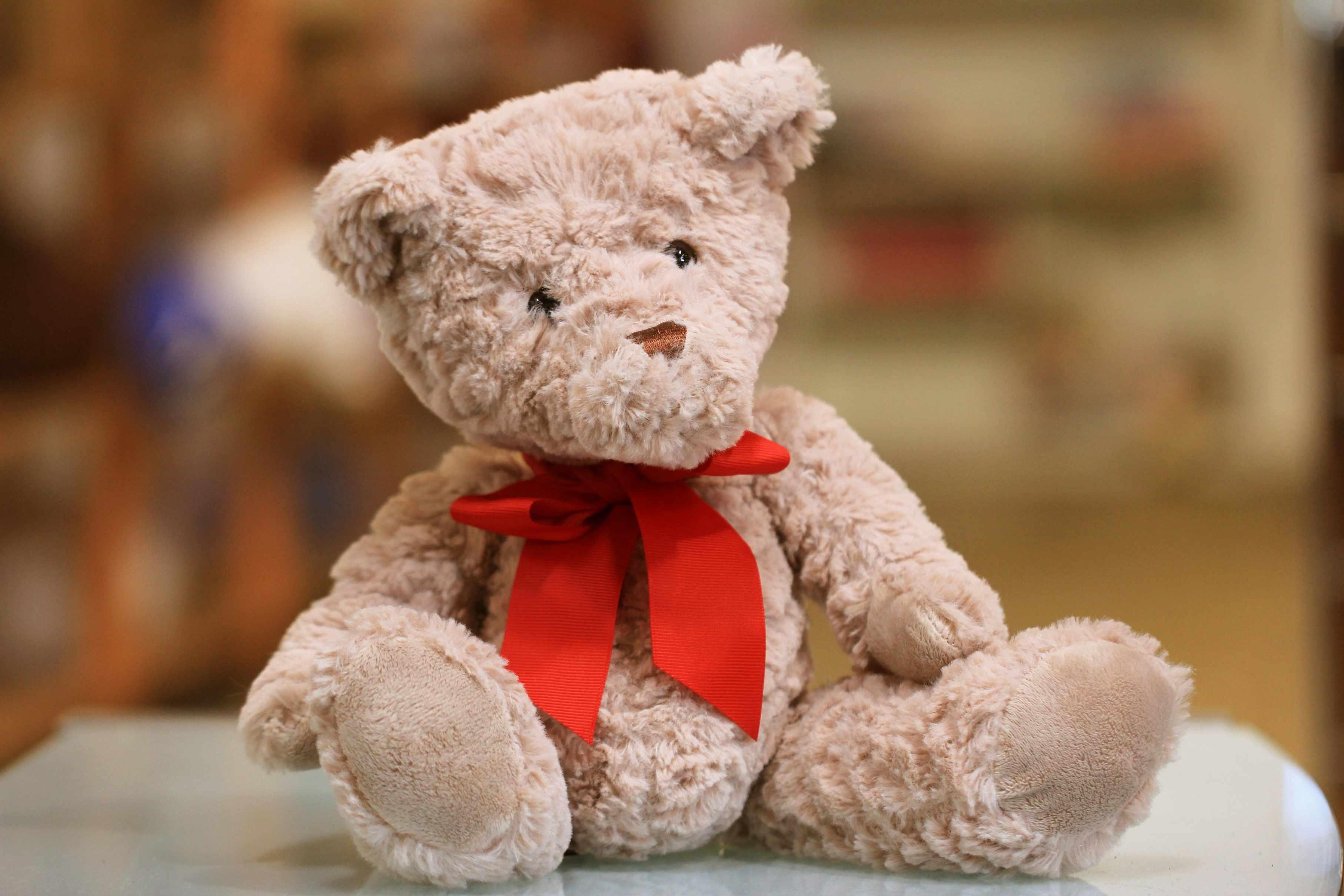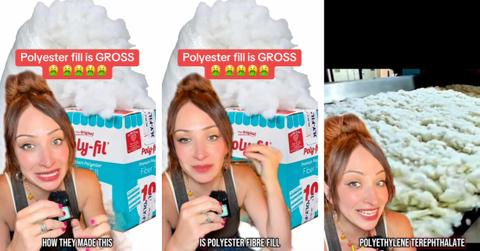Anti-Plastic TikToker Discusses the Toxicity of Polyester Fiber Fill Found in Pillows
Certified organic materials like cotton and kapok are safer.
Published Aug. 19 2025, 5:28 p.m. ET
There is no doubt about it: many synthetic materials, namely polyester, contain PFAS. Indeed, the waste produced by discarded polyester comprises an agonizingly disgusting amount of microplastic pollution on earth, making it one of the least eco-friendly fibers around.
If you're wondering if polyester fiber fill and polyester material is bad for you, you couldn't be more spot-on with your concerns about this destructive synthetic fiber that is bad for people and bad for the planet.
Little do many people know, lurking inside their stuffed animals and pillows are dangerous polyester fibers, posing a toxic risk to families everywhere. As TikTok user Beatrice the Anti-Plastic Lady discovered, the ubiquity of polyester fiber fill and its astounding toxicity is something that more people should know.
Below, we explore the nuances of why polyester fiber fill is used so frequently to synthetically fill materials, and what other options may exist as suitable alternatives.

TikTok user discusses toxicity of polyester fiber fill.
On Aug. 7, Beatrice the Anti-Plastic Lady discussed why she finds polyester fiber fill to be disgusting, including its ubiquity in everything from Teddy bears to pillows.
"Probably like, 90% of the pillows out there, it's 'down alternative' and it's crazy cheap, which is why it's everywhere," Beatrice explains at the start of the video.
"Basically, they make polyester fiber like they make cotton candy," she continued, referring to the heating process by which sugar is converted into cotton candy being similar to how plastic is heated to make polyester fiber fill.
"They're basically cooking that plastic. Straight off the bat, we know that polyester, aka polyethylene terephthalate, has 806 toxic chemicals in them. A plastic leaches much easier when it's hot."
"It's also used for just about all children's stuffed animals and pets' stuffed chew toys," notes one TikTok user in response to the video, as another confirms: "It’s plastic that creates microplastics that you breathe in."
"My dad makes furniture, so I grew up working with this material often…no wonder I’d always get intense hives all over my body," another user wrote in response to the video, citing how the fiber from polyester can cause allergic reactions in some people, as Healthline attests.
Safe alternatives to polyester fiber fill.
As explained in one fascinating Reddit post, some people are seeking alternatives to traditional stuffing materials, like polyester fiber fill. While this Redditor has a phobia of cotton, one kind commenter noted that scraps of yarn or fabric can be upcycled to use as fill.
For those who have discovered their pillow fill and outer pillow materials are all polyester, I have found the LOFE organic cotton pillows to be an excellent, safer alternative to the materials used in cheap pillows sold in major retail stores.
Organic cotton fill can be used in place of "Poly-fil" for those seeking a safer alternative to fill their stuffed animals and pillows.
According to FoamOnline, Kapok fiber is a natural stuffing used for pillows (and stuffed animals) that come from the fibers of the kapok tree. It is described as a "plant-based alternative to down feather pillow stuffing. Kapok pillows are soft, plush, and compress easily. The fiber is so soft and airy that it is also referred to as silk cotton."
Furthermore, "Kapok fiber is also hypoallergenic, meaning that it is an ideal solution for those that need an allergen-free bedroom," per FoamOnline. "Its moisture-resistant characteristics make the fiber resistant to harmful microorganisms that can cause mold and mildew."
